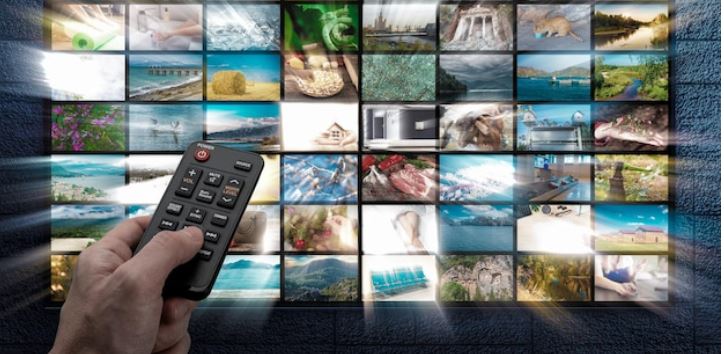Analysis of OTT Predominance and IPR Violations
Abstract
The amount of content consumed online in India is rising steadily. Nearly 95% of Indian consumers listen to music through on-demand streaming, according to the 2018 Music Consumer Insights Report from the International Federation of the Phonographic Industry. Customers are also using OTT services more frequently to watch movies and TV shows. Their percentage of the total revenue from the digital sector increased from 3.3% in 2017 to 13% in 2018. High internet adoption, affordable data prices, and a rise in smartphone usage are all contributing factors to this change in consumer behavior. Additionally, the Covid-19 epidemic has sped up the process of digitization and renewed debate over online copyright. Through the Internet Protocol, the growing idea of intellectual property has successfully adapted the law over time to the online community. Due to the fact that business assets are increasingly being represented by knowledge rather than by physical attributes, intellectual property has been able to make such an impact in the digital environment. There are issues with protecting intellectual property rights as our lives become more and more dependent on the Internet. The Copyright Registry recently held consultations with industry stakeholders on revising the Copyright Act 1957. India now has the chance to recommit to its objectives of developing and disseminating online creative content within a secure legal environment. This article covers copyright infringement and related rules for OTT platforms.
[Image source: Freepic]
Introduction
Authors of creative works are legally granted certain rights known as intellectual property rights (IPRs). Patents, copyrights, and trademarks are examples of intellectual property rights that grant property rights. The 19th century saw the emergence of the phrase “intellectual property.” It just entered into the international legal systems in the 20th century. The protection of creators’ rights and their intellectual property is the main goal of intellectual property laws. Not all of these advantages are unassailable, though. They need to be accepted by the law. One of many Indian laws that defends creators’ intellectual property rights is the Copyright Act of 1957.
A copyright is a legal privilege granted to the owner of intellectual property. It is the right to copy, as the name implies. Therefore, copyright means that the creator of a product has the legal right to it. For a limited period of time, copyright law gives the product’s original producers the sole right to use or duplicate their work. Media platforms that disseminate audio, video, movies, television shows, and other types of material are referred to as “OTTs.” The fundamental principles of intellectual property law are being called into question as a result of developments in information and communication technologies that are pushing the frontiers of creative possibility in previously unthinkable ways. OTT services like Google, Skype, Viber, WhatsApp, Netflix, Amazon, and Hulu which are sources of audio-visual material that may be viewed on a number of devices for free or at reasonable costs have made it very simple and less expensive to stay connected. The popularity of Over-the-top (OTT) media is rising. Understanding copyright infringement issues on such platforms and the laws protecting them from infringement is crucial.
Protection Under Copyright Act and Information Technology Act
While traditional media formats like film and television have defined rules, OTT material is still not subject to specific legislation and oversight. Anyone attempting to remove OTT content off the platform must rely on already-existing legal mechanisms provided by other pertinent laws since there are no specific regulatory bodies or regulations that can apply to OTT content. The targeted OTT content must be deemed unlawful and adhere to the requirements of relevant law in order to be legally deleted or withdrawn from an OTT platform. Furthermore, the actions taken must be suitable and substantially doable to delist an OTT service provider. These laws include the Information Technology Act of 2002 and the Copyright Act of 1957. Additionally, protections against the risk of piracy are included in both the Information Technology Act of 2000 and the Copyright Act of 1957. It is known as copyright infringement when someone copies or reproduces another person’s work without that person’s permission. Section 2(m) of the Copyright Act of 1957 defines “making an infringing copy” as the act of doing so. Section 14 of the Copyright Act defines copyright and discusses the various exclusive rights that a copyright owner possesses, such as the ability to reproduce, reproduce, and store works. The Information Technology Act of 2000, which makes it unlawful to transmit copyrighted content online, defines the extent of piracy under Sections 43 and 66. Intermediaries must uphold their legal responsibilities and make sure they don’t host or publish any content that violates the intellectual property rights of people or businesses, according to Section 79 of the Content Technology Act.
New regulatory framework for OTT platforms
The Ministry of Information and Broadcasting (MIB) has met with numerous stakeholders over the past year to discuss the necessity for some sort of regulation of OTT platforms in order to streamline the market. The Information Technology (Guidelines for Intermediaries and Code of Ethics for Digital Media) Rules 2021 were released by the MIB with this in mind. When transmitting content, OTT platforms will have to adhere by the fundamental laws of the nation. They must also set up a three-tier grievance procedure, akin to what digital media businesses do. In the case of online curated content, self-regulatory authorities have the power to compel publishers to revise pertinent content ratings, update pertinent content summaries, and make pertinent changes to content descriptions, age classifications, and access control measures. Digital news organizations and OTT businesses operating in India are now required to publish monthly compliance reports outlining complaints received and specifics of legal steps taken, as well as to submit information about their firms to the I&B Ministry.
Conclusion
The increase in the number of streaming services available on the Internet and the resulting growth in content has only fueled the piracy of these services. While the existing law has some measures to address this, more thorough regulations that are strictly implemented must be created based on international norms. This will prevent OTT video piracy while also defending the rights of authors of copyrighted works. In the event of copyright infringement on OTT platforms, India is anticipated to provide copyright holders with statutory protection. It is more crucial than ever to safeguard writers’ rights, user data, and trust as online media platforms grow in popularity.
Author: Shreya Verma, B.A. LL.B – 3rd Year, A Student of New Law College, Bharati Vidyapeeth Deemed to be University, Pune, in case of any queries please contact/write back to us at support@ipandlegalfilings.com & IP & Legal Filing.



